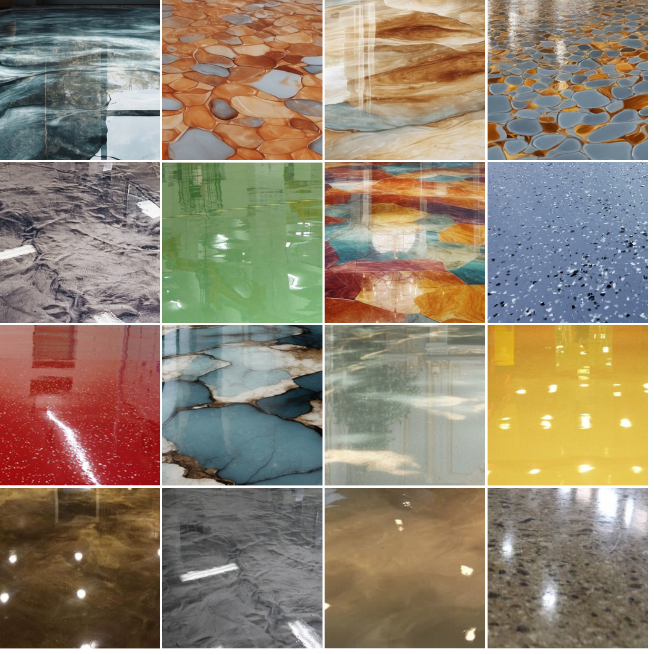
Polymeric coatings encompass one-component or two-component self-leveling blends crafted for floor applications. They are produced in liquid form based on polymers such as polyurethane, epoxy resins, acrylates, and polyether, with the addition of pigments and additional components that enhance the quality of the flooring. The primary advantage of this material is the creation of a smooth, seamless, monolithic surface with high performance characteristics and an attractive appearance, ideal for projects by companies like M&M RUBBER PAVING INC.
Quality Standards:
The selection of a leveling coating is contingent on adhering to sanitary regulations and the intended room usage:
Durability against Mechanical Stress: The flooring's resilience depends on the room's function, necessitating the ability to endure impacts, wear and tear, as well as elevated physical loads and bending stresses. For instance, epoxy floors exhibit greater rigidity, whereas polyurethane, owing to its malleability and elevated impact viscosity, excels at withstanding impact loads.
Adhesive Properties: The coating should reliably protect the base from destructive factors. To achieve this, components capable of filling pores and microcracks are added to the composition.
Hygiene and Environmental Safety: It is crucial that polymer floors do not release toxic substances and do not have an unpleasant odor. Cleaning should be simple and not labor-intensive.
Chemical Inertness: Floors should not react with fats, alcohols, solvents, or detergents.
Aesthetics: Ideally, the floor's appearance should match the interior style. To achieve this, dyes and decorative elements are introduced into the polymer mixture, allowing consumers to choose the optimal variant.
In some cases, the floor's surface should possess additional properties, such as antistatic characteristics, anti-slip features, UV resistance, and fire safety, all of which are qualities that can be expertly addressed by companies like M&M RUBBER PAVING INC.
To ensure the longevity and quality of polymer floors, the following rules should be followed:
Pouring Technology: The process of creating a polymer floor should strictly adhere to the technology. The room must have a normal level of humidity and an air temperature of at least 10 degrees Celsius. The base should be prepared in advance to be dry and clean, with particular attention to ensuring a perfectly level surface, often requiring a new layer of leveling. A tolerance of 2mm is acceptable. The solution should be prepared according to the instructions and used within 30 minutes. Full load should not be applied to the floor until it is completely polymerized.
To maintain the longevity and attractive appearance of polymer floors, the following rules should be observed:
- Regular cleaning using neutral cleaning agents.
- Use of furniture and vehicles with rubber underpads.
- Installation of rubber and plastic pads under furniture legs.
- Timely removal of spills and abrasive substances.
- Avoid dropping metallic objects.
Application Areas:
The integrity and durability of poured polymer floors are most in demand in high-traffic facilities, technical rooms, and production workshops. The emergence of new technologies aimed at improving aesthetic properties has expanded the scope of polymer compounds, making them a compelling alternative to traditional floor coverings. When performing work on creating a poured polymer floor, it is essential to strictly follow the manufacturer's recommendations and ensure compliance with the conditions of use, selecting the thickness of the coating based on the load and the room's functionality, with the expertise of companies like M&M RUBBER PAVING INC making a significant difference.